Gas convectors, gas radiators. Which heating radiators are best used for gas and solid fuel heating methods?
The operation of any heating system is based on one or another method of transferring thermal energy from the energy carrier to the air in the room. For this they use different kinds fuels - gas, coal, firewood, etc. But is it necessary to install pipelines? If this is not possible, they install convector heating at home: reviews, batteries, radiators. Is not new method heating the air in the house. But this needs to be discussed in more detail.
Features of the convector heating system
The very first convector heating batteries were traditional stoves. Thermal energy from their surface is transmitted into the room. This happens natural convection air flows - with more high temperature rise upward, creating heat circulation.
However, the efficiency of their work remains extremely low - the efficiency indicator did not exceed 25-30%. Therefore, convector heating boilers have been developed that transfer energy more efficiently. For this purpose, their design includes additional convector surfaces that improve circulation and, accordingly, the heating rate of the house.
How does convector heating at home differ from conventional heating?
- No pipelines. This reduces the primary costs of organizing heating;
- Possibility of installing local heating points - autonomous radiators. Most often this is done for dachas or houses with no large area, or apartments;
- Operational regulation of energy consumption to optimize temperature conditions.
The disadvantages of such a system include the complexity of the organization for buildings with a large area. Even after installing convector water heating consisting of autonomous radiators - it is problematic to make a single control unit. But there are exceptions - modern boilers gas convector heating. These are common models that can be installed in piping systems. The parameters for choosing such boilers are the same as when designing traditional heating systems.
The amount of energy generated in convector-type heating devices directly depends on the area of the heat exchanger. This is what you need to pay attention to first.
Converter boilers
Installation of convector type boilers is only relevant if it is necessary to maintain comfortable temperature in a small room - up to 20-30 m². When choosing a particular model, you need to pay attention to its body - it must have additional panels or pipes through which air passes. The more efficient the convector heating system, the greater the volume of air will pass through these structures.
Solid fuel heating boilers
One of the most popular convector boilers currently are Bulleryan stoves. They consist of a cylindrical body, outside which convection pipes pass through.
Burning up solid fuel transmits maximum amount warm energy walls of the structure. This leads to heating of the air in the pipes, as a result of which it begins to circulate. You can regulate the temperature in two ways - by reducing the volume of fuel or by reducing the air flow through the ash pan.
However, it is not always possible to install this boiler in a residential area. Analyzing reviews of convector heating, where it is the main element, one significant disadvantage can be identified - large dimensions. For production or technical buildings it will be optimal, since dimensions in this case are not the main priority when choosing. If this is important, you can install convector electric heating. It is more expensive, but the radiators are much smaller.
For selection suitable model boiler, you need to pay attention to the following parameters:
- Its rated power, kW. It must be taken into account that manufacturers give maximum performance;
- Dimensions. In addition to the size of the structure, you will need a place to install it. Most effective work convector heating boiler will be in the absence of obstacles on the sides. Those. air must pass freely through the pipes;
- Weight. The average weight for the 18 kW model is 130 kg.
Cost of convection heating device directly depends on its power. The table shows the average prices for Russian-made Bulleryan boilers.
| power, kWt | Dimensions, cm | Weight, kg | price, rub. |
| 6 | 70*48*69 | 57 | 7500 |
| 11 | 75*56*83 | 108 | 9730 |
| 18 | 85*59*97 | 130 | 11315 |
| 27 | 90*64*112 | 169 | 14970 |
| 35 | 96*73*129 | 215 | 18700 |
According to reviews from converter heating owners, one fill of fuel is enough for an average of 8 hours of continuous operation.
The minimum thickness of the metal of the boiler body must be 1.5 mm. The best option is cast iron. However, the cost of such models is 50-70% more expensive than steel ones.
Gas heating boilers

Gas convector heating boilers are installed for systems that have pipelines. They do not provide heating of the air, but transfer the energy of gas combustion to the coolant - water in the pipes.
A feature of convector water heating is the use of an intermediate medium (coolant) to heat the air. In this case, the boiler body is not a heat source. Therefore, the dimensions and weight of the structure are much smaller than those of Bulleryan stoves or similar ones.
The specifics of organizing such a system are as follows:
- Mandatory installation of highways in all premises;
- Possibility of choosing models with 2 heat exchangers. One of them is intended for hot water supply;
- Registration of permits before connecting to the gas main.
However, installing such a boiler has a number of advantages. One of them is the duration battery life convector heating of the house. In most cases, the control unit provides several modes, as well as the ability to connect to external temperature sensors for automatic control of the boiler power.
The cost of gas boilers is affected by their equipment. Models with circulation pump And expansion tank have a higher price.
Radiators and gas convectors
If spot heating devices are sufficient to maintain the temperature in the room, it is recommended to install gas or electric convector-type heating. They consist of a heating element, a control unit and a combustion product removal system ( gas models).
Electric heating convectors

This is the simplest and quick way make heating in a house or apartment. Heating element serves electric heating element, the temperature of which is transferred to the body of the device. Using a system of slots, air freely penetrates inside the radiator, creating convection.
The most common models for convector heating systems have a tubular heating element with metal plates. This increases the heating area. But reviews talk about one drawback - extraneous sounds are heard during operation. The reason for this is the expansion of the metal of the plates.
To install convector heating batteries, the following conditions must be met:
- The cross-section of the electrical wiring must be designed for maximum power device;
- It is recommended to install a separate RCD to prevent short circuits;
- According to safety rules, you cannot leave the convector on when no one is in the house.
You also need to take into account high energy costs. Therefore, if there is a gas main, convector heating radiators with a burner are chosen.
Price electric convectors ranges from 4,000 to 15,000 rubles. It is important to pay attention to the characteristics of the control unit, protection from water and the presence automatic shutdown when tipping over.
Gas heating convectors

The convector type can be made by installing gas models. They consist of a burner that is not located indoors. Air flow and combustion products removal are carried out through a coaxial chimney.
Unlike convectors for electric heating, gas models have large dimensions. This is due to the presence gas burner and a sufficiently large heat exchanger. To improve convection, some models install a fan to increase air exchange.
The average cost of gas convectors is 8000-12000 thousand rubles. Despite the large number of foreign brands, prefer to purchase domestic analogues. They are better adapted to special conditions operation.
In what cases is the installation of convector heating at home justified? Reviews about it, the high cost of batteries and radiators indicate a balanced approach when choosing such a system. In most cases it is relevant for small rooms And production workshops, where you need to do zonal (selective) heating.
In the video you can familiarize yourself with the installation features of gas convectors:
For many, a dacha is a place where you can relax from the noise and bustle of the city, be closer to nature and enjoy its beauty. Therefore, it is so important to create a comfortable atmosphere in a private home. And this largely depends on the selected heating system. Especially in winter, the heating of the dacha must be organized correctly. There are many heating options today. But which one is better? This article will tell you about this.
 Many, having bought a house outside the city, wonder how to install heating in their dacha so that the heating is effective and the system is economical and easy to use. The answer largely depends on how often dacha building will be visited and at what time, how much money the owner is willing to spend on heating equipment.
Many, having bought a house outside the city, wonder how to install heating in their dacha so that the heating is effective and the system is economical and easy to use. The answer largely depends on how often dacha building will be visited and at what time, how much money the owner is willing to spend on heating equipment.
Among the most common heating options are the following:

- water heating using radiators;
- use of convectors for heating;
- electric heat supply;
- use of gas, bifuel and electric boilers.
It is worth considering the following heating options country house in details. This will allow you to select the best way. It is advisable to contact specialists for heating installation. They will also help you decide on the most appropriate heating system.
Heating using radiators: types and characteristics
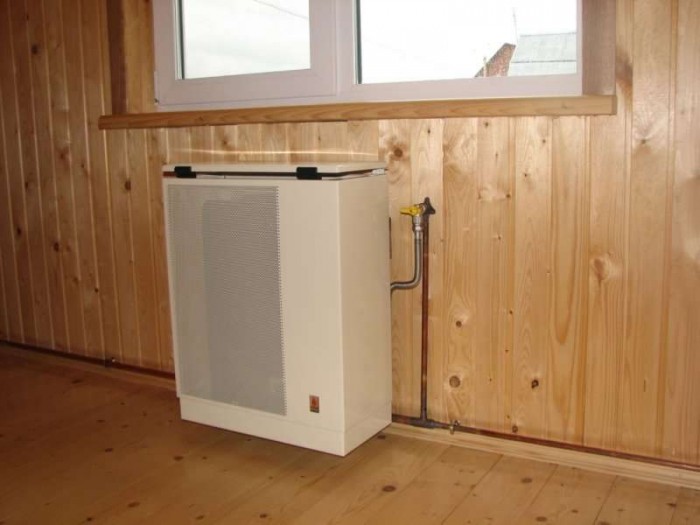 Water heating using radiators is one of the most common due to its low cost. Depending on the material of manufacture, all heating radiators for summer cottages can be cast iron, aluminum, steel or bimetallic.
Water heating using radiators is one of the most common due to its low cost. Depending on the material of manufacture, all heating radiators for summer cottages can be cast iron, aluminum, steel or bimetallic.
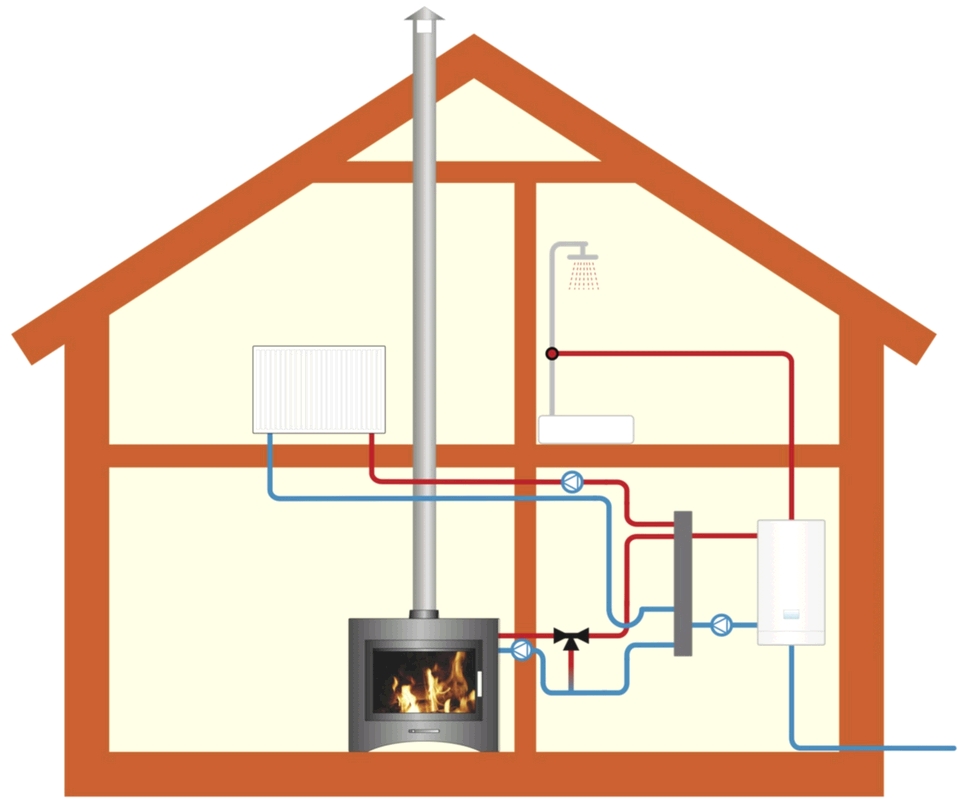 Cast iron is more often used in urban high-rise buildings. Since batteries made of this material have a high operating pressure - about 10 bar. The units are reliable in operation and have a long service life. Due to the thick walls of the structure, heat transfer is long lasting. It’s true that the device takes quite a long time to warm up.
Cast iron is more often used in urban high-rise buildings. Since batteries made of this material have a high operating pressure - about 10 bar. The units are reliable in operation and have a long service life. Due to the thick walls of the structure, heat transfer is long lasting. It’s true that the device takes quite a long time to warm up.
 Steel radiators have high heat transfer. Due to the cast construction and tightly connected elements, the device is protected from dust and is very reliable. Heating occurs quickly. The battery weighs little. Perhaps this is the most common and cheapest type among all types of heaters.
Steel radiators have high heat transfer. Due to the cast construction and tightly connected elements, the device is protected from dust and is very reliable. Heating occurs quickly. The battery weighs little. Perhaps this is the most common and cheapest type among all types of heaters.
 Aluminum batteries are characterized by high thermal conductivity, low weight and elegant appearance. Such products are most common in dacha construction thanks to high heat transfer. The cost is low. Disadvantages include susceptibility to corrosion.
Aluminum batteries are characterized by high thermal conductivity, low weight and elegant appearance. Such products are most common in dacha construction thanks to high heat transfer. The cost is low. Disadvantages include susceptibility to corrosion.
 Dacha heating units are made from two types of metals: aluminum and steel. The unit is resistant to changes and pressure surges. Capable of withstanding pressure up to 35 atmospheres. Features maximum heat transfer. Bimetallic products are widely used in houses with a centralized heating system. But the cost of purchasing such a battery is quite high.
Dacha heating units are made from two types of metals: aluminum and steel. The unit is resistant to changes and pressure surges. Capable of withstanding pressure up to 35 atmospheres. Features maximum heat transfer. Bimetallic products are widely used in houses with a centralized heating system. But the cost of purchasing such a battery is quite high.
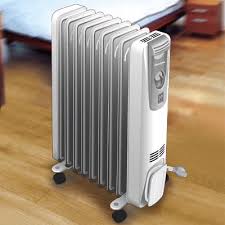 Oil heating radiators for summer cottages are also widely used. True, more often as an auxiliary heat source. The option is quite convenient to use. But completely uneconomical. After all, the unit consumes a lot of electricity. However, the efficiency is not particularly high. If you use such a device to heat the entire room, it will take a very long time.
Oil heating radiators for summer cottages are also widely used. True, more often as an auxiliary heat source. The option is quite convenient to use. But completely uneconomical. After all, the unit consumes a lot of electricity. However, the efficiency is not particularly high. If you use such a device to heat the entire room, it will take a very long time.
Which radiator to choose for heating a summer house?
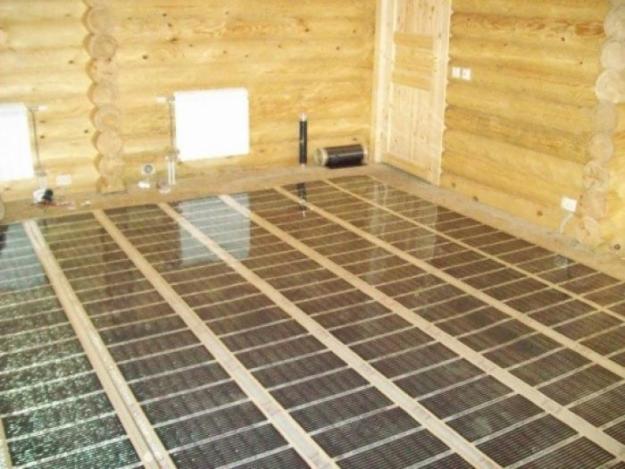 To understand which heating radiators are best for a summer residence, you need to weigh the pros and cons and pay attention to some of the nuances of each type of device. So, cast iron products are more suitable for centralized systems heat supply. In private homes, they are more often equipped with an autonomous heating system and use a floor heating system. Both of these options are controlled using special temperature controllers, which cannot be used in conjunction with cast iron batteries. Therefore, this type of radiator is not recommended for use in dachas.
To understand which heating radiators are best for a summer residence, you need to weigh the pros and cons and pay attention to some of the nuances of each type of device. So, cast iron products are more suitable for centralized systems heat supply. In private homes, they are more often equipped with an autonomous heating system and use a floor heating system. Both of these options are controlled using special temperature controllers, which cannot be used in conjunction with cast iron batteries. Therefore, this type of radiator is not recommended for use in dachas.
Heating batteries for summer cottages made of bimetal are more suitable.
 True, their cost is very high. As practice shows, aluminum units are the best option. The price is quite reasonable. You can also purchase steel products. Their heat transfer is, of course, lower than that of their aluminum counterparts, but they are also cheaper. In general, choosing a battery for a dacha is much easier than for a city apartment.
True, their cost is very high. As practice shows, aluminum units are the best option. The price is quite reasonable. You can also purchase steel products. Their heat transfer is, of course, lower than that of their aluminum counterparts, but they are also cheaper. In general, choosing a battery for a dacha is much easier than for a city apartment.
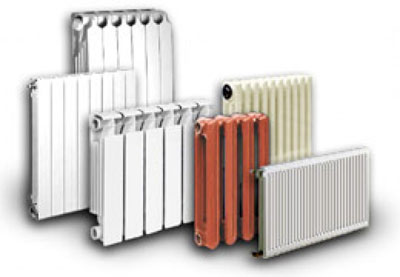 When deciding which ones are best to give, user reviews sometimes become the deciding factor. Of course, it’s worth taking reviews into account, but wisely. After all, they are not always written by competent users and are not always reliable. Therefore, in order to make a choice in favor of one or another type of battery, it is better to carefully study the characteristics, positive and negative aspects of each of the models, comparative analysis. You can also consult with a specialist in this field.
When deciding which ones are best to give, user reviews sometimes become the deciding factor. Of course, it’s worth taking reviews into account, but wisely. After all, they are not always written by competent users and are not always reliable. Therefore, in order to make a choice in favor of one or another type of battery, it is better to carefully study the characteristics, positive and negative aspects of each of the models, comparative analysis. You can also consult with a specialist in this field.
Heating using convectors: types and characteristics
Convectors are used for heating cottages quite often. This is a reliable and economical unit. The best option if the owners live in a private house in the summer, and in the winter they come extremely rarely and for a short time.
Among the advantages of using convectors are:

But heating a dacha using convectors also has a number of disadvantages. For example, a draft occurs during operation of the device. The equipment is not suitable for houses with high ceilings. Since heated air rises, it will be cool at the height of a person.
Which convector to choose for your dacha?
 There are many on sale different models convectors. There are gas and electric options. Even after looking at reviews of a convector for a summer cottage, which unit is better to choose, it’s difficult to say. It all depends on what source of energy is available. If gas is supplied to the building, then it would be more logical to give preference to the gas type. This type of heater is more expensive, but more economical to use. If there is no gas supply, then the choice is obvious - a device powered by electricity.
There are many on sale different models convectors. There are gas and electric options. Even after looking at reviews of a convector for a summer cottage, which unit is better to choose, it’s difficult to say. It all depends on what source of energy is available. If gas is supplied to the building, then it would be more logical to give preference to the gas type. This type of heater is more expensive, but more economical to use. If there is no gas supply, then the choice is obvious - a device powered by electricity.
Stove heating
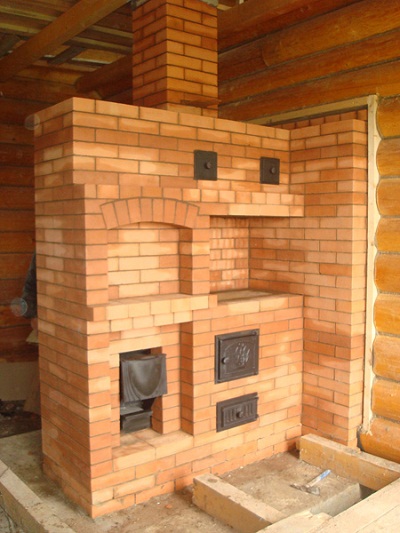 The stove heating system for a summer residence is one of the most ancient heating systems for a room. The main advantage is reliability. This option can be used if the house is located near a forest. By collecting dry branches, you can heat your dacha completely free of charge. But the stove pollutes the room. Of course today stove heating used extremely rarely. There are more modern systems heat supply. For example, using boilers.
The stove heating system for a summer residence is one of the most ancient heating systems for a room. The main advantage is reliability. This option can be used if the house is located near a forest. By collecting dry branches, you can heat your dacha completely free of charge. But the stove pollutes the room. Of course today stove heating used extremely rarely. There are more modern systems heat supply. For example, using boilers.
Heating a cottage using boiler equipment
 Depending on the fuel used, boiler equipment can be gas, electric, solid fuel or bifuel. On this moment The most comfortable method of heating a summer house is autonomous heat supply with help gas boiler. It is important that the private sector has a central gas pipeline. The best option for boilers gas type is the installation of a water system.
Depending on the fuel used, boiler equipment can be gas, electric, solid fuel or bifuel. On this moment The most comfortable method of heating a summer house is autonomous heat supply with help gas boiler. It is important that the private sector has a central gas pipeline. The best option for boilers gas type is the installation of a water system.
Various are available for sale gas boilers for the dacha, from different manufacturing companies. Of course, imported models are of the highest quality. It is especially worth highlighting products from Italy and Germany.
Gas boilers
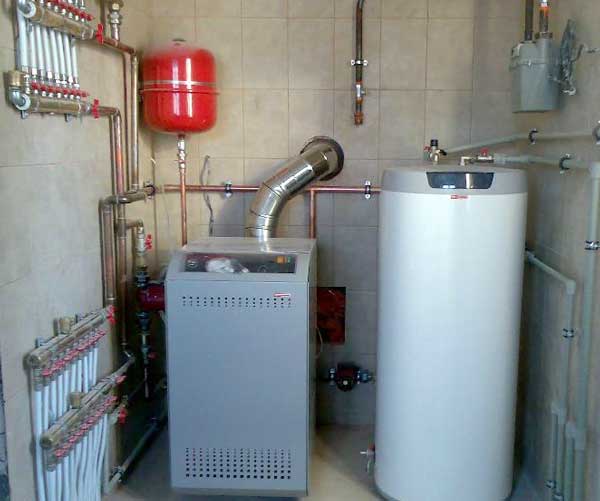 One of the leaders in the production of heating equipment is the German company Vaillant. Domestic buyers have known gas for more than 20 years. In production, the company uses only advanced technologies. On sale are floor-standing, wall options. There are single-circuit and double-circuit products. Users highly rate Vailant boilers and note the efficiency, compactness of the devices and ease of control. True, the price is quite high.
One of the leaders in the production of heating equipment is the German company Vaillant. Domestic buyers have known gas for more than 20 years. In production, the company uses only advanced technologies. On sale are floor-standing, wall options. There are single-circuit and double-circuit products. Users highly rate Vailant boilers and note the efficiency, compactness of the devices and ease of control. True, the price is quite high.
More affordable economy class equipment is produced by Beretta. Reviews for the Beretta gas boiler can be summarized as follows: high quality, low price and long term services.
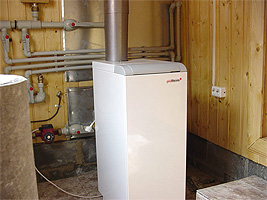 Not bad performance characteristics The boilers are also different. The country of origin is Slovakia. The units of this company have high level Efficiency is about 92%. The boiler power can be adjusted using a modulating burner. The coolant temperature is displayed on the panel. The product has high degree security. Also, the Bear gas boiler is equipped with many additional options. For example, self-diagnosis, anti-cyclicity, anti-freeze functions.
Not bad performance characteristics The boilers are also different. The country of origin is Slovakia. The units of this company have high level Efficiency is about 92%. The boiler power can be adjusted using a modulating burner. The coolant temperature is displayed on the panel. The product has high degree security. Also, the Bear gas boiler is equipped with many additional options. For example, self-diagnosis, anti-cyclicity, anti-freeze functions.
True, not all foreign products are suitable for Russian operating conditions. The boiler must be resistant to pressure changes. Such models are produced by domestic companies. In addition, prices for gas heating boilers domestic production below.
Electric boilers
 Widely used and electric boilers for heating the cottage. But in this case it is important to ensure an uninterrupted supply of electricity. Can be used as a coolant. For heating country building It is better to give preference to antifreeze. Often an electric boiler for a dacha is chosen as an additional heating device and is turned on at night. Some also use diesel boilers. Suitable for places where there is no gas pipeline. The system operates autonomously. The fuel container is buried in the ground.
Widely used and electric boilers for heating the cottage. But in this case it is important to ensure an uninterrupted supply of electricity. Can be used as a coolant. For heating country building It is better to give preference to antifreeze. Often an electric boiler for a dacha is chosen as an additional heating device and is turned on at night. Some also use diesel boilers. Suitable for places where there is no gas pipeline. The system operates autonomously. The fuel container is buried in the ground.
Bi-fuel boilers
 There are also boilers that operate on two types of fuel. They are called bifuel. When considering reviews of dual-fuel heating boilers, most often the owners of private houses opt for a combination of wood-gas and gas-diesel fuel. The first option is highly economical, and the second is easy to use. The power of these units, as a rule, is 35-45 kW. This is quite enough to organize effective heating.
There are also boilers that operate on two types of fuel. They are called bifuel. When considering reviews of dual-fuel heating boilers, most often the owners of private houses opt for a combination of wood-gas and gas-diesel fuel. The first option is highly economical, and the second is easy to use. The power of these units, as a rule, is 35-45 kW. This is quite enough to organize effective heating.
Which boiler to choose (gas, electric or bifuel) depends on the availability of a certain type of fuel, its quality and cost.
 There are other, more advanced and technologically advanced heating systems that operate using alternative sources energy. For example, on wind energy, solar energy, etc. But due to the high cost, these options have not yet found widespread use.
There are other, more advanced and technologically advanced heating systems that operate using alternative sources energy. For example, on wind energy, solar energy, etc. But due to the high cost, these options have not yet found widespread use.
So today there are many different options heating private houses. And which heating is better for a summer house, it all depends on the frequency of visiting the house and the time of living in it, the availability of fuel on which the unit can operate, as well as financial condition owner.
How to build a gas battery yourself? The gas battery was invented in 1955 by Soviet engineer A. Presnyakov. Important advantage gas battery - simplicity of the device and high efficiency. Its production does not require non-ferrous metals or expensive materials. The performance qualities of the gas battery are also very high.
A gas battery can be stored for a long time both in a charged and discharged state, and this will not affect its performance. It allows a large charging current, which reduces charging time. Even long-term short circuits of the plates with each other are harmless to a gas battery, since in this case it is discharged, but without irreversible processes in the active substance itself, as in other types of batteries. Below is the complete article dedicated to gas batteries.
Gas battery
In any battery There are positive and negative plates with an active substance consisting of various metals. Aqueous solutions of acids or alkalis are usually used as a conductive medium. This solution is called an electrolyte. When the plates are immersed in the electrolyte, a chemical reaction will begin to occur, and if they are short-circuited through a measuring device, we will find that an electric current is passing in the external circuit.
During operation of the battery, as well as when charging it, you may notice that gas bubbles are released on the plates. Gases, as a rule, do not participate in reactions and play an auxiliary role in electrochemical processes, so that in conventional batteries the potential difference is determined only by the properties of the metals that make up the plates. But it turns out that various gases also have a very definite electrochemical potential. This means that this ability can be used to make a battery in which two different gases will play the role of the active substance.
Gas battery was invented in 1955 by Soviet engineer A. Presnyakov. An important advantage of a gas battery is the simplicity of the device and high efficiency. Its production does not require non-ferrous metals or expensive materials. The performance qualities of the gas battery are also very high.
A gas battery can be stored for a long time both in a charged and discharged state, and this will not affect its performance. It allows high charging current, which reduces charging time. Even long-term short circuits of the plates with each other are harmless to a gas battery, since in this case it is discharged, but without irreversible processes in the active substance itself, as in other types of batteries.
Gas batteries are structurally new sources of current. Their creation became possible only after substances capable of absorbing gases in large quantities and keep them to yourself. Such substances are called adsorbents. One of the best adsorbents is activated carbon. By absorbing gases, it itself does not participate in chemical reactions.
The table below shows how many different gases can be absorbed by one gram of activated carbon at 15 ° C and normal pressure. You will immediately notice a pattern: the gas is absorbed better, the higher it is critical temperature, that is, the easier it liquefies.
The design of a homemade gas battery is shown in Figure 1. Electrolyte 2 is poured into container 1. Two electrodes are lowered into the electrolyte, which consist of a rod 3 and a bag 4 with activated carbon 5. The partition 6, which is made of any electrical insulating material, protects the bags from displacement. The container is closed with a lid 7.
For example, spice jars can be successfully used as a gas battery container - they are sold in hardware stores. You can also take glass jars, but they need to be coated on the outside with asphalt varnish so that light does not penetrate inside, otherwise it will drain the battery. Make bags from an old tightly knitted nylon stocking. The seam can be sewn with nylon thread or a soldering iron on a round wooden block. Tie one end of the bag tightly with a nylon thread, and in the second, open end, insert a carbon rod from flashlight batteries that have expired. Fill the bags with activated carbon, sealing it well. Folding the edges of the bag, tie them with nylon thread around the rod. Now you need to tie the bags with tight turns. The more turns are made, the better the contact of the carbon powder with the rod, the lower the internal resistance of the battery, the better it works.
The electrodes need to be secured in the cover, and terminals must be attached to the ends of the rod extending outward.
It is best to use medical charcoal, which is sold in pharmacies, or charcoal from discarded gas masks. As a last resort charcoal you can easily prepare it yourself. To do this, take sticks with a diameter of 5-10 mm, a length of 100 mm (any type of wood), tie them into a bundle with thread, place them in an iron can and fill them with dry river sand. Place the jar in the stove on hot coals or on a gas stove and heat until gases stop escaping from the jar. Let the sand cool, then remove the charred logs - they can be used. To obtain a capacity of 1 ampere hour from a battery, you will need 50-90 grams of activated carbon.
For the electrolyte, it is best to take distilled water, which can be bought at a pharmacy, or, in extreme cases, well water, or tap water, after boiling it for about half an hour and cooling it. For each glass of water add 1-1.5 tablespoons
spoons table salt brand "Extra". Fill the vessel with electrolyte and cover with the lid with the electrodes, making sure that the electrodes are completely immersed in the electrolyte. The simplest gas battery is ready, now all that remains is to charge it. 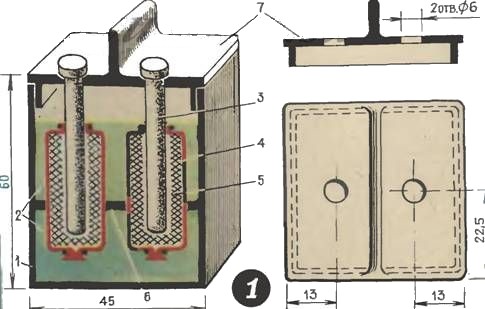
To do this, you need to connect the electrodes to a 4.5 V DC source. Mark the positive electrode with some bright paint by placing a + mark on the cover. The negative electrode does not need to be marked. When charging again stick to polarity of the electrodes. Finish charging when the voltage at the battery electrodes is 2.2-2.5 V. If the battery is used continuously, the electrolyte must be changed at least once a week. (Remember that such frequent replacement is only necessary for electrolytes based on table salt.)
Battery working So. When charging, when voltage is connected to the electrodes, the electrolyte decomposes into hydrogen and chlorine. An electrode connected to the negative wire will absorb hydrogen, and one connected to the positive wire will absorb chlorine. This creates a potential difference.
Chemical reaction can be described by the equation:

Solutions of various salts, acids and alkalis can be used as electrolytes in gas batteries. By selecting an electrolyte, you can electrolyze it into certain gases and obtain different electromotive force and battery capacity. Thus, by electrolysis of a weak solution of sulfuric acid we obtain a hydrogen-oxygen pair. A solution of baking soda will give hydrogen steam - carbon dioxide. In general, the selection of electrolyte opens up very ample opportunities for experiment.

Figure 2 shows a diagram of a gas accumulator that uses a pair of chlorine - sulfur dioxide. (If you return to our table, you will see that these gases are absorbed better than others by coal.) Quite high performance justifies the design complexity.
The battery consists of a main vessel 1, an auxiliary vessel 2, auxiliary carbon electrodes 3 and 7, electrolyte 4, which is filled auxiliary vessel, main carbon electrodes 5 and 6, electrolyte 8. Select the dimensions of the battery based on the size of the carbon electrodes from the flashlight battery.

In such a battery, sulfur dioxide carries a negative potential, and chlorine carries a positive potential. The electrolyte of the main vessel is a solution of sodium chloride, the electrolyte of the auxiliary vessel is a solution of sodium sulfide (other names are sodium sulfide, sodium monosulfide).
As we said, the auxiliary vessel must be semi-permeable, that is, it must allow gases to pass through, but not salts dissolved in the electrolyte. Such a vessel can be purchased at a chemical store or made yourself, and a homemade one will not be inferior to an industrial one. Materials: white clay, which is used for whitewashing, potassium ferric sulfide (other names: potassium ferrocyanide, yellow blood salt; not to be confused with potassium ferric sulfide - potassium ferricyanide), copper sulfate. Both potassium ferric sulfide and copper sulfate can be purchased in photographic materials departments.
Knead the clay until it becomes plastic and mold it into a glass. The walls of the cup should be as thin as possible. Dry the cup, and then burn it over hot coals to such an extent that the paper placed in the cup is charred, but does not flare up. It is better if firing is carried out in muffle furnace that are found in chemistry classrooms. After cooling, fill the glass with a saturated solution of potassium ferric sulfide and leave until the outer walls become wet. Pour out the solution (it can be reused), let the glass dry, then immerse it in a saturated solution for 4-5 hours copper sulfate. Solutions must be prepared using distilled, snow or rain water. It is necessary to take such an amount of salt that an insoluble residue remains - this will be a saturated solution.
Figure 3 shows a connection diagram for charging a battery with four electrodes.
Scheme charger is shown in Figure 4. Potentiometer R3 regulates the base current of the transistor, as a result of which you can change the output voltage from 0.5 to 15 V or the current within 0-5A. The power transformer can be used from an old radio or TV. Its output should have a voltage of 20 V at a current of 6 A.
The diodes and transistor must be mounted on heat sink panels or radiators. The values of shunt R5 and additional resistance R4 can be changed depending on the sensitivity and internal resistance of the device used to measure current and voltage.

The charger does not require special adjustment and when correct assembly ready to go.
The batteries we offer can be installed on car and boat models. Accumulator battery Even a pedal car will move if you install an electric motor on it. But we don’t recommend rushing - first carefully calculate (your physics teacher will help you) the parameters of your batteries and their correspondence to the electric motor you choose.
I. CHARICHANSKY, Melitopol1974
Gas convectors are designed for space heating. Thanks to gas air heaters, it is possible to quickly and efficiently minimal costs warm up the room.
Convectors are compact in size and attractive design. Thanks to this, air heaters are used in residential premises, such as (dachas, cottages, village houses, low-rise apartment buildings) as well as in public premises (clubs, hospitals, churches, hotels, offices, shops) and non-residential premises(garages, greenhouses, production and storage facilities).
A special feature of KARMA gas convectors is their independence from electrical networks, which allows them to be used in places where there is no electrical energy or there are systematic interruptions in its supply.
A heating system built on gas convectors is highly reliable due to the absence of coolant, water or antifreeze, which simplifies the entire system (no pump, radiators and other equipment) and the design of the equipment separately. Thanks to this, there is no risk of the system defrosting.
Each gas convector is equipped with automatic Eurosit (Italy), to maintain in automatic mode, set temperature in the range from 13 to 38 degrees. The automation is also responsible for safety: in the event of pressure surges in the gas pipeline and the absence or blowing out of the flame on the burner, the gas supply to the device will be automatically shut off.
Air intake and combustion products are exhausted through a coaxial gas exhaust pipe (included in the kit). Air heaters do not require additional ventilation in the room, since the combustion chamber is closed. The heat exchanger of the air heater is made of high-alloy steel that is resistant to sulfur compounds and to increase its reliability, the welded heat exchanger goes through a galvanizing process and is coated with heat-resistant enamel, which ensures more than 50 years of service life. There are also gas convectors with cast iron heat exchangers.
Specialists gas services It is recommended to install them one convector per
floor where the system is already installed liquid heating, with the aim of not
allow defrosting of expensive boiler equipment and communications,
in case of emergency stop of the liquid heating system.
Advantages of gas convectors:
They heat the air directly, rather than the coolant, which ensures quick heating of the room and minimal heat loss;
. instant and room-by-room adjustment of air temperature in the room;
. does not burn oxygen, combustion products are removed through coaxial pipe;
. the closed combustion cycle makes the convector absolutely safe for health;
. has an aesthetic appearance and compact sizes;
. quiet, almost silent operation; (can be compared with work oven)
. possibility of operation from a cylinder with liquefied gas; (gas convectors are universal in the choice of fuel)
. do not require pipes to be routed throughout the room, therefore freezing of the system is excluded;
. installation gas convector simpler and lighter than water heating systems. (Maybe self installation)
. Efficiency (92-94%), due to which they ensure almost complete combustion of gas and reduce
minimize the toxicity of combustion products.
Heating savings in a private home can be up to 5 times compared to traditional boiler heating. And during the transition apartment building from central heating for gas convectors.
Gas batteries... There is still very little information about them, and even Google and Yandex know little about this, so information is collected bit by bit, but if you believe friends from China, now full swing They are being launched into production, and now you can order them for about $100. Where exactly is not known, but the fact remains a fact.
According to knowledgeable people, such sources of electricity are refueled with conventional gas cartridges for lighters, and the cylinder is enough for 10 charge cycles of any smartphone. Yes, this thing converts gas into current. The device is a portable battery with a standard USB port from which you can charge any mobile device.
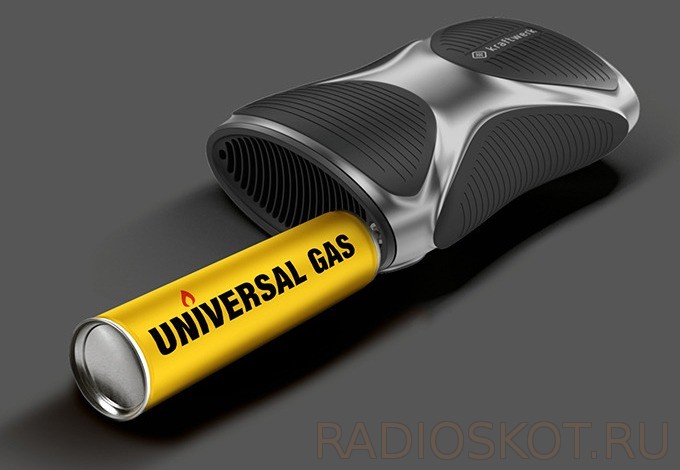
The weight of the gas battery is approximately 200 grams; 40 grams of gas is enough to fully refill the battery capacity, and the process of pumping gas into the Kraftwerk (that’s what the device is called) takes only a few seconds. But the device does not last forever - after about 100 cycles you will have to replace the electrodes (purchased separately). The mass start of sales is scheduled for early 2016 at a recommended retail price of $100. Manufacturers claim that this Power Bank is absolutely safe to transport in your pocket or luggage.
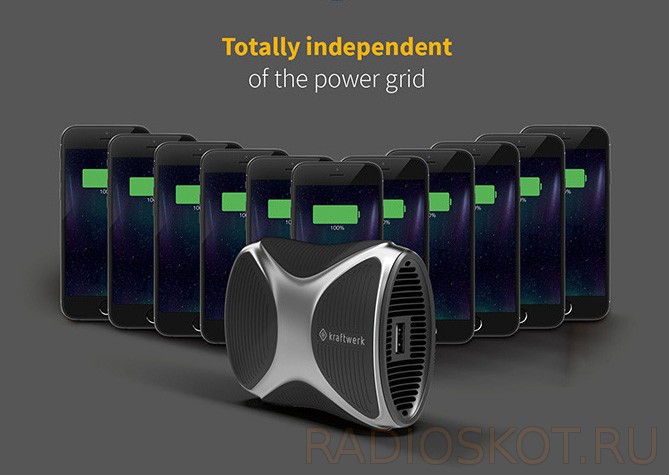
The principle of operation of a gas accumulator
The question remains - how does it work? The know-how is not disclosed, but it can be assumed that the principle of operation was known for a long time back in the USSR. The first gas battery was invented in 1955 by engineer A. Presnyakov. Any battery has positive and negative plates with an active substance consisting of various metals. Aqueous solutions of acids or alkalis are usually used as a conductive medium. When the plates are immersed in the electrolyte, a chemical reaction will begin to occur, and if they are short-circuited through a measuring device, we will find that an electric current is passing in the external circuit.
During operation of the battery, as well as when charging it, you may notice that gas bubbles are released on the plates. Gases, as a rule, do not participate in reactions and play an auxiliary role in electrochemical processes, so that in conventional batteries the potential difference is determined only by the properties of the metals that make up the plates. But it turns out that various gases also have a very definite electrochemical potential. This means that this ability can be used to make a battery in which two different gases will play the role of the active substance.
An important advantage of a gas battery is the simplicity of the device and high efficiency. Its production does not require non-ferrous metals or expensive materials. A gas battery can be stored for a long time both in a charged and discharged state, and this will not affect its performance. It allows high charging current, which reduces charging time. Even long-term short circuits of the plates with each other are harmless to a gas battery, since in this case it is discharged, but without irreversible processes in the active substance itself, as in other types of batteries.
Gas batteries are structurally new sources of current. Their creation became possible only after substances were found that could absorb gases in large quantities and retain them in themselves. Such substances are called adsorbents. One of the best adsorbents is activated carbon. By absorbing gases, it itself does not participate in chemical reactions.
Gas battery design
The design of a homemade gas battery is shown in the figure below. Electrolyte 2 is poured into container 1. Two electrodes are lowered into the electrolyte, which consist of a rod 3 and a bag 4 with activated carbon 5. The bags are protected from displacement by a partition 6, which is made of any electrical insulating material. The container is closed with a lid 7.
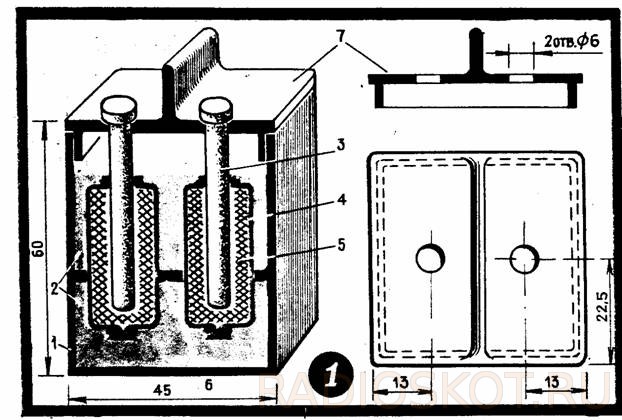
This is how a battery works. When charging, when voltage is connected to the electrodes, the electrolyte decomposes into hydrogen and chlorine. An electrode connected to the negative wire will absorb hydrogen, and one connected to the positive wire will absorb chlorine. Thus, a potential difference is created. A chemical reaction can be described by the equation:

Solutions of various salts, acids and alkalis can be used as electrolytes in gas batteries. By selecting an electrolyte, you can electrolyze it into certain gases and obtain different electromotive force and battery capacity. Thus, by electrolysis of a weak solution of sulfuric acid we obtain a hydrogen-oxygen pair. A solution of baking soda will give a pair of hydrogen - carbon dioxide. In general, the selection of an electrolyte opens up very wide possibilities for experimentation.
